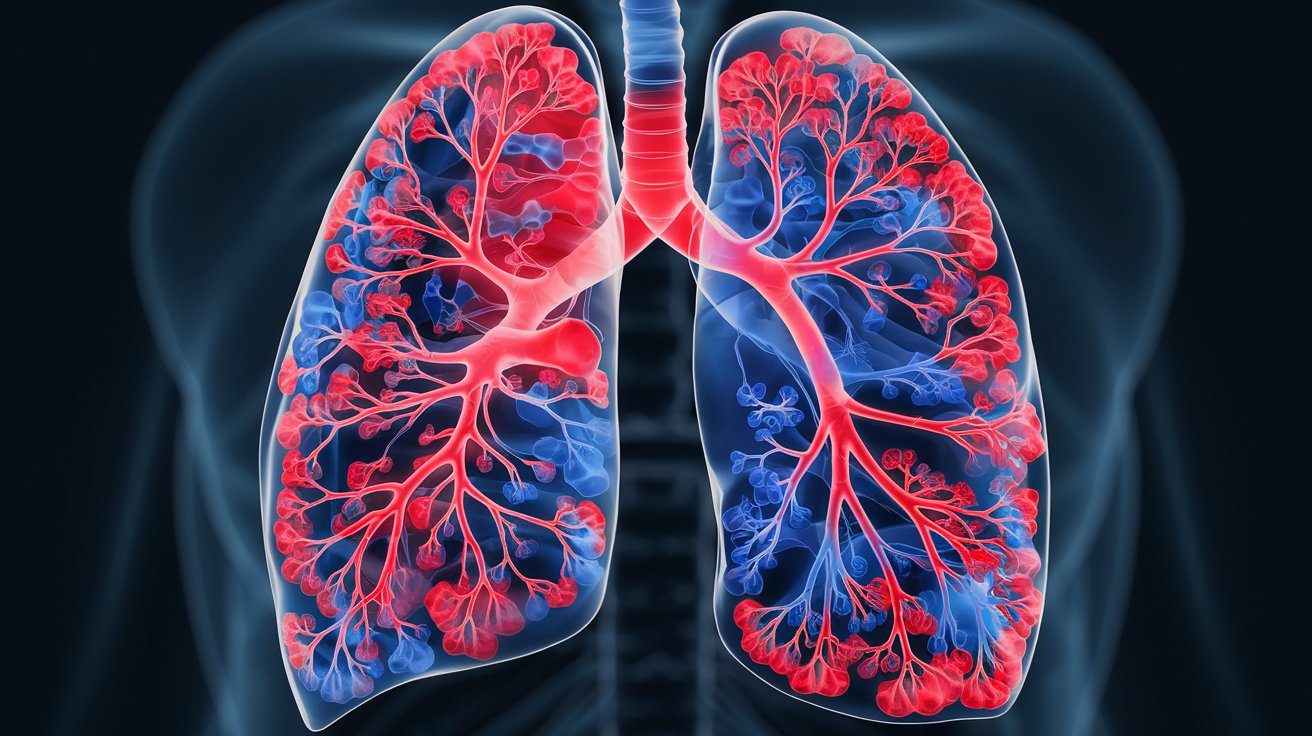
Familial Pulmonary Capillary Hemangiomatosis (PCH) is a rare lung disease that affects the blood vessels in the lungs. This condition causes abnormal growth of capillaries, leading to breathing difficulties and heart problems. Pulmonary Capillary Hemangiomatosis is often misdiagnosed due to its similarity to other lung diseases. Understanding this condition is crucial for early detection and treatment. In this blog post, we will share 25 facts about Familial Pulmonary Capillary Hemangiomatosis to help you grasp its complexities. From symptoms and causes to treatment options, these facts will provide a comprehensive overview of this rare but serious condition.
Key Takeaways:
- Familial Pulmonary Capillary Hemangiomatosis (PCH) is a rare genetic lung disorder causing capillary overgrowth and pulmonary hypertension. Early diagnosis and treatment can improve outcomes and quality of life.
- While there is no cure for PCH, treatments like medications, oxygen therapy, and lung transplant can help manage symptoms and improve patients' quality of life. Ongoing research aims to develop new treatments for this rare condition.
What is Familial Pulmonary Capillary Hemangiomatosis (PCH)?
Familial Pulmonary Capillary Hemangiomatosis (PCH) is a rare, genetic lung disorder. It involves abnormal growth of capillaries in the lungs, leading to severe health issues. Here are some intriguing facts about this condition.
- Rare Disease: PCH is extremely rare, with fewer than 100 cases reported worldwide.
- Genetic Link: This condition often runs in families, indicating a genetic component.
- Capillary Overgrowth: PCH causes an overgrowth of capillaries in the lungs, which can obstruct blood flow.
- Pulmonary Hypertension: The capillary overgrowth leads to pulmonary hypertension, a serious condition where blood pressure in the lungs' arteries is elevated.
- Symptoms: Common symptoms include shortness of breath, fatigue, and chest pain.
- Diagnosis: Diagnosing PCH typically involves imaging tests like CT scans and lung biopsies.
- Misdiagnosis: PCH is often misdiagnosed as other lung diseases due to its rarity and nonspecific symptoms.
- Age of Onset: Symptoms usually appear in young adults, but can occur at any age.
- Gender Prevalence: PCH affects both males and females equally.
- No Cure: Currently, there is no cure for PCH, but treatments can help manage symptoms.
How is Familial PCH Diagnosed?
Diagnosing Familial PCH can be challenging due to its rarity and the similarity of its symptoms to other lung conditions. Here are some key facts about the diagnostic process.
- CT Scans: High-resolution CT scans are often used to identify abnormal capillary growth in the lungs.
- Lung Biopsy: A lung biopsy, where a small tissue sample is taken, can confirm the diagnosis.
- Genetic Testing: Genetic testing can help identify mutations associated with PCH.
- Echocardiogram: This test uses sound waves to create images of the heart and can detect pulmonary hypertension.
- Pulmonary Function Tests: These tests measure how well the lungs are working and can indicate the presence of PCH.
What are the Treatment Options for Familial PCH?
While there is no cure for Familial PCH, several treatments can help manage the symptoms and improve quality of life. Here are some important facts about treatment options.
- Medications: Drugs like diuretics and blood thinners can help manage symptoms.
- Oxygen Therapy: Supplemental oxygen can ease breathing difficulties.
- Lung Transplant: In severe cases, a lung transplant may be considered.
- Lifestyle Changes: Patients are often advised to avoid strenuous activities and high altitudes.
- Regular Monitoring: Ongoing medical check-ups are crucial to monitor the progression of the disease.
What is the Prognosis for Familial PCH?
The prognosis for Familial PCH varies depending on the severity of the condition and the effectiveness of treatments. Here are some facts about what patients can expect.
- Variable Outcomes: Prognosis can range from several years to decades, depending on individual cases.
- Early Detection: Early diagnosis and treatment can improve outcomes significantly.
- Quality of Life: With proper management, many patients can maintain a good quality of life.
- Research: Ongoing research aims to better understand PCH and develop new treatments.
- Support Networks: Support groups and counseling can provide emotional and practical support for patients and their families.
Final Thoughts on Familial Pulmonary Capillary Hemangiomatosis
Familial Pulmonary Capillary Hemangiomatosis (PCH) is a rare, serious lung disease. Understanding its symptoms, causes, and treatments can help those affected and their families. Early diagnosis is crucial for managing the condition and improving quality of life. Genetic factors play a significant role in PCH, so family history is important. Treatment options are limited but include medications and, in severe cases, lung transplants. Ongoing research aims to find better treatments and possibly a cure. Awareness and education about PCH can lead to earlier detection and better support for patients. If you or a loved one shows symptoms, consult a healthcare professional. Stay informed and proactive in managing health.
Frequently Asked Questions
Was this page helpful?
Our commitment to delivering trustworthy and engaging content is at the heart of what we do. Each fact on our site is contributed by real users like you, bringing a wealth of diverse insights and information. To ensure the highest standards of accuracy and reliability, our dedicated editors meticulously review each submission. This process guarantees that the facts we share are not only fascinating but also credible. Trust in our commitment to quality and authenticity as you explore and learn with us.
